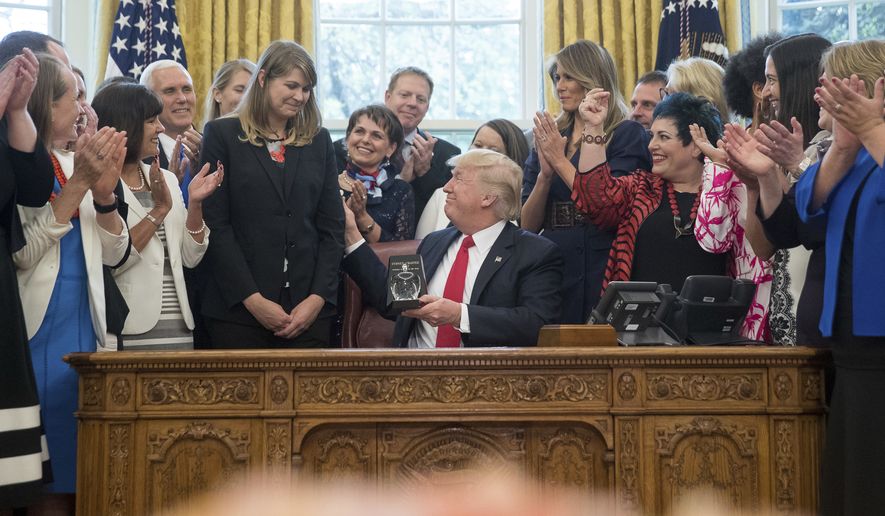OPINION:
President Trump presented his eagerly anticipated tax-reform scheme Wednesday and the reviews were, as expected, mixed but hopeful.
“Clearly we have a unique opportunity to do something major here,” said Gary Cohn, director of the president’s National Economic Council. “It’s our intention to create a huge tax cut and equally as important, a huge simplification of the tax system in America.”
The president would slash tax rates on businesses and make major changes to rates for individuals, some of them sure to raise the usual howls and squeals, but the result would be real reform of a tax system that Jimmy Carter famously called “a disgrace to the human race.” (Dogs and cats didn’t like it, either.)
The reforms largely reflect the campaign promises Mr. Trump made, to wide applause, in his campaign for president. But there are stark differences. One change likely to provoke objections would repeal provisions enabling individual taxpayers to deduct state and local taxes from reportable income on which they pay federal income tax. This would particularly hurt taxpayers in high-tax states like New York, California and New Jersey.
The Trump proposal would impose a top tax rate of 35 percent on individuals, down from 39.6 percent at present but more than the 33 percent he proposed on the stump. A standard deduction for everyone would be doubled, but deductions except for mortgage interest and charitable contributions, including those to religious institutions, would be eliminated.
President Trump and many economists argue that tax cuts will make the economy, sluggish over the past eight years, blossom and grow, restrain deficits and restore public confidence in the government.
“We’ve been hearing from the [Obama] administration that 3 percent growth is hard to get to, and they couldn’t get there,” says Steven Mnuchin, the secretary of the Treasury, “and that’s why we got this new president. If there had been a 3 percent growth maybe there would have been a different outcome.”
But the president’s tax-cut proposal, like his proposed budget, is just that, a proposal. Presidents propose and Congress can, and usually does, dispose. Republicans generally praised the president’s proposal in the hours leading up to the president’s announcement as details began to emerge from the White House. But many congressmen in the Grand Old Party are split on the size of the tax cuts in the Grand Old Proposal, and which tax breaks, particularly for business, should stay or go away.
Unless Mitch McConnell, the leader of the Republicans in the Senate, and Speaker Paul Ryan in the House can keep their troops in line for whatever final reform emerges — and that’s always a big Republican “if” — the White House will need Democratic votes.
Sen. Charles Schumer, the leader of the Democratic minority in the Senate, chimed in with the expected discordant note from his place in the shade of the no-no tree, reflecting the Democratic view that Mr. Trump’s proposals are tilted heavily in favor of the prosperous.
Rep. Kevin Brady of Texas, the Republican chairman of the House Ways and Means Committee that will send the final proposal to Congress, sounded a more positive note. “It really makes clear the president’s commitment to tax reform and delivering it in a very bold way this year,” he says. “We’ve still got some work to do. There’s no question about it.”
But tax reform is finally on the table, and that’s a start.




Please read our comment policy before commenting.